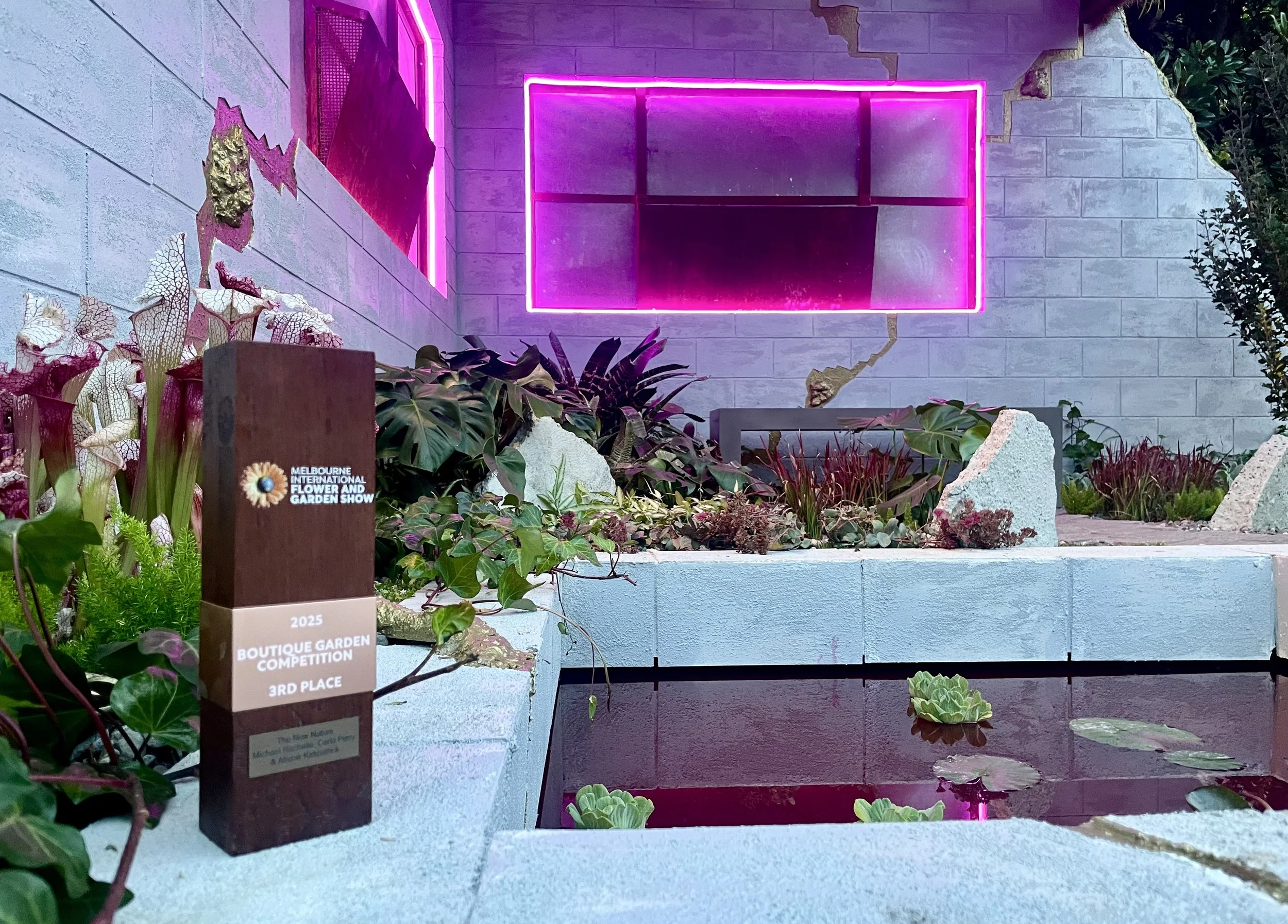THE NEW NATURE – GROWING HOPE IN BROKEN PLACES
When bats thrive in disused mines and sewage treatment plants become premier birdwatching destinations, we're witnessing the emergence of a new nature, one where human existence causes ripples that enable our fellow species to thrive in exciting and unpredictable ways. The New Nature is an exploration and exposé of this modern entanglement, acting as an invitation to see the potential and the beauty of what is possible.
The New Nature - Photo Credit: Vivi Scarpari
Winning Bronze in the 2025 Boutique Garden Competition at the Melbourne International Flower & Garden Show, the garden was a collaboration between Alistair Kirkpatrick, Carla Perry Gardens, and Michael Rochelle Landscapes; built in partnership with Innerbloom Landscapes. Together, we sought to challenge perspectives, using plants as both medium and message to explore hope in our inevitable hybrid future landscapes.
Set within a reclaimed post-industrial warehouse, The New Nature reimagines the role of plants in healing our cities. As population growth and subsequent urban expansion inevitably forces development into contaminated brownfield sites, we have an opportunity - perhaps even an obligation - to work with these landscapes rather than against them.
This garden explores the remarkable power of phytoremediation (where plants naturally absorb or neutralise pollutants) and hyperaccumulation (when heavy metals are locked away within the plants) as a new park typology. Prominent examples of this bold approach can be experienced at Ballast Point Park and Paddington Reservoir (both in Sydney), and Landschafts Park in Germany.
Every plant specified in the garden has the capacity to heal the earth, air, and waterways. To highlight this message of repair, our design drew inspiration from the ancient Japanese art of kintsugi, where gold fills the cracks of broken ceramics, elevating and even honouring the story in the object. In The New Nature, golden highlights weave through fractured blockwork and concrete baton paving, through the garden, drawing the eye deeper. The damage of the former industrial site is not hidden – it is integral to the garden’s story of giving new life. Just as the golden scars of kintsugi make broken ceramics more beautiful than the original, contaminated sites offer a unique design potential that pristine land cannot.
The materiality of our garden was also integral to the message we hoped to convey. The pavers were hand-sawn from a mid-century driveway, the concrete uprights were reclaimed from landfill, and the washed recycled aggregate was replete with curios from its storied past - coloured glass, terracotta earthenware, ceramic crockery, and even a Victorian-era 1891 halfpenny. Many elements were diverted from landfill or the scrapheap, and many more found a new life or were re-used after the show had finished, upholding our design principles.
The New Nature - Photo Credit: Vivi Scarpari
The garden proved both controversial and inspiring. One industry publication noted it was 'hard-hitting' while mainstream media described it as 'beautiful and inspiring.’ This discomfort signals necessary change. When 'beautiful and inspiring' can describe a contaminated site, we're shifting from seeing pollution as failure to seeing it as potential. By embracing both the imperfections of our society and the healing passage of time, The New Nature looks to reframe brokenness as resilience.
This philosophy extends beyond symbolism and materiality, it challenges the conventions of landscape design. Must we carve and discard what came before to make the best design? Is tabula rasa a necessity, or just habitual? Must we erase the past before we can create something beautiful? The answer isn't always no – The New Nature demonstrates that contaminated sites can become assets rather than liabilities when we design with their histories rather than against them.



